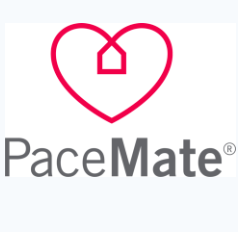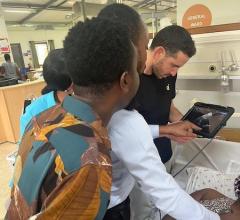
August 14, 2025 — PaceMate has officially completed a year-long project, resulting in two new exclusive abilities. The company can now directly migrate all historical patient data from PaceArt Optima to PaceMateLIVE. It is the only company to integrate with SessionSync, the in-clinic data capture tool for Medtronic devices, and wirelessly transfer in-clinic patient data. Prior to making this new functionality live to the broader PaceArt user base, select healthcare providers gained early access to PaceMate’s precision data transfer capabilities with great success.
PaceMate acquired PaceArt from Medtronic in 2024 and healthcare providers across the country have since transitioned from the legacy solution to PaceMate’s cloud-based platform. As part of the acquisition, PaceMate also brought on the original Medtronic team, who have been critical to preparing both platforms for the new system-to-system data migration.
PaceMate is now the only company able to migrate comprehensive historical PaceArt patient data – including patient visit summaries, device advisory details, patient comments and historical manufacturer reports–directly to its platform. And it does so without risk of inaccuracies or missing data points. Similarly, PaceMate integrates with SessionSync In-Clinic Data Transfer, which enables it to wirelessly transfer all data from Medtronic device checks, rather than transferring limited data through a USB or manual data entry. This process results in clinics being able to manage routine patients in under 2 minutes, saving an average of 2.5 minutes per patient – or nearly 4.25 hours per 100 patients.
Healthcare providers that previously relied on PaceArt for cardiac monitoring are gaining more than just robust data access when they make the transition to PaceMateLIVE.
They are now able to:
- Manage all cardiac devices from one unified platform. This includes more than 150 discrete data points from implantables, wearables, ambulatory, heart failure and consumer ECG devices–all in a single interface.
- Streamline workflows that have traditionally been spread across multiple different platforms.
- Prioritize critical patients through its proprietary Auto-Triage functionality, which automatically distinguishes between standard manufacturer alerts and truly actionable alerts that require priority attention from clinicians. They can also create customizable parameters that affect all patients–or apply only to individuals.
- Integrate with EHRs in real-time through a proven track record of over 700 completed integrations – the most in the industry.
- Receive real-time updates, including instant notifications on new features, critical advisories or recalls. This ensures healthcare providers can take immediate action to maintain patient safety.
- Optimize practice performance with analytics. Turn data into actionable insights that optimize practice performance, productivity and operational decisions.
- Automate billing to seamlessly manage clinic reimbursements.
- Offer deeper patient chronology, fuel research and accelerate machine learning outcomes.
“Since our acquisition of PaceArt Optima, we’ve been dedicated to servicing its users whether or not they migrate to PaceMateLIVE,” said J.R. Finkelmeier, CEO of PaceMate. “And because we’ve spent 10 years at the forefront of the industry’s evolution, we know that many healthcare systems are planning to switch to a cloud-based platform. Our plan is to continue supporting customers who want to remain on PaceArt, and we’re making it so that when they’re ready to switch to the cloud, they will be getting the best and most valuable experience available on the market.”
PaceMate’s comprehensive monitoring and data management platform scales with users’ growth and ensures undisrupted continuity of patient care.
For more information, please visit https://pacemate.com/.


 November 12, 2025
November 12, 2025 









